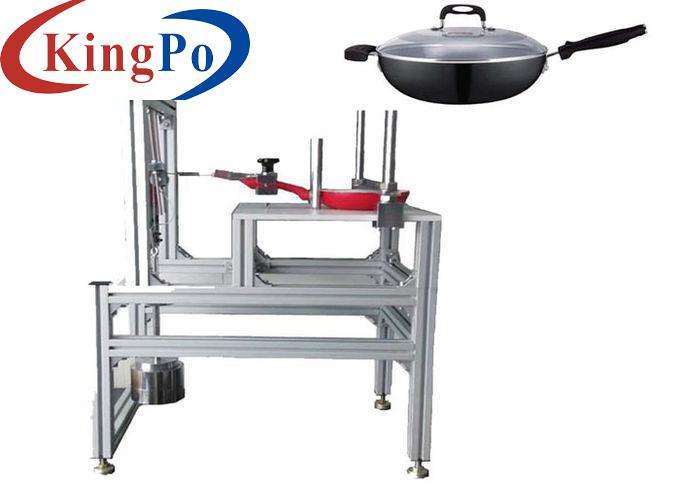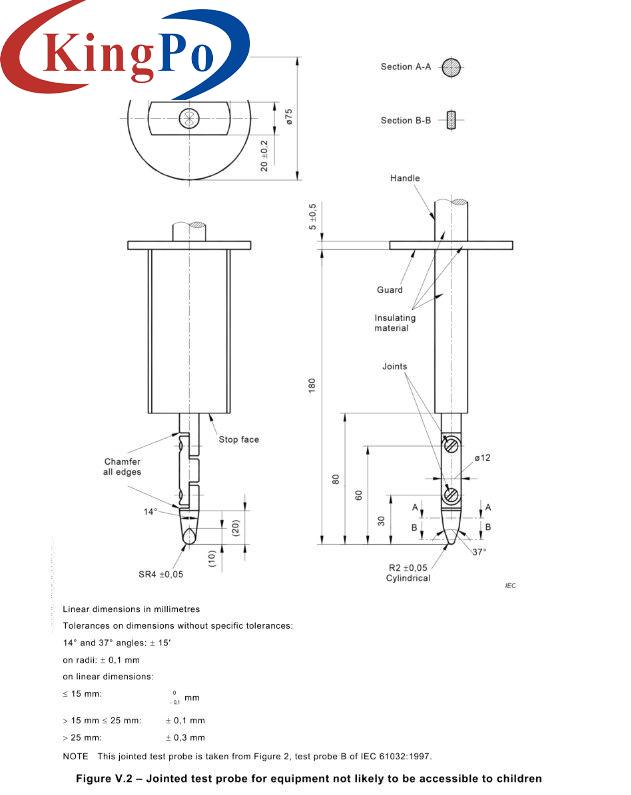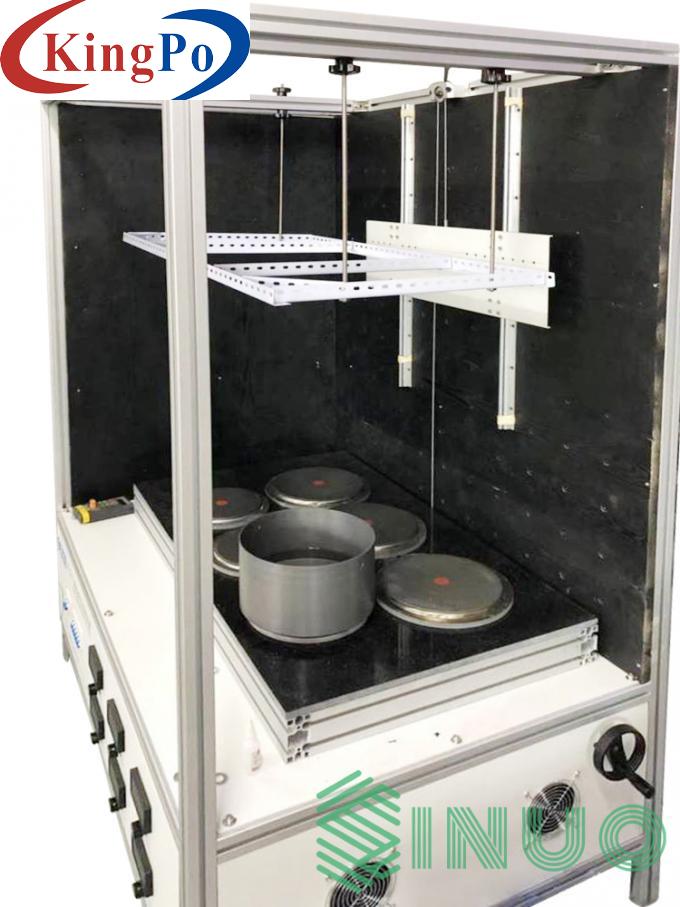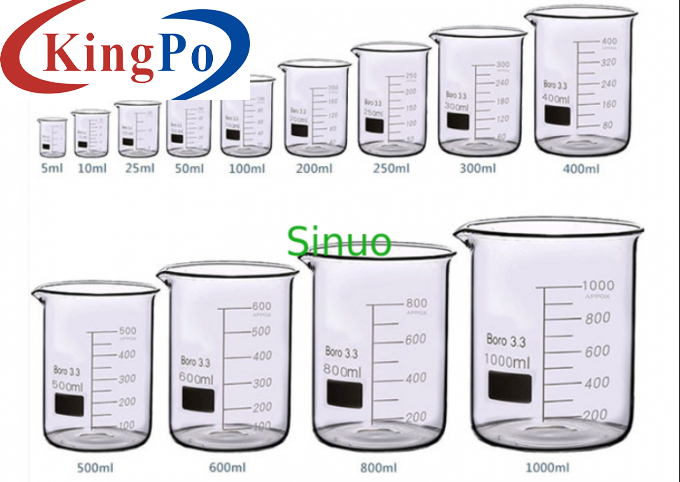Products
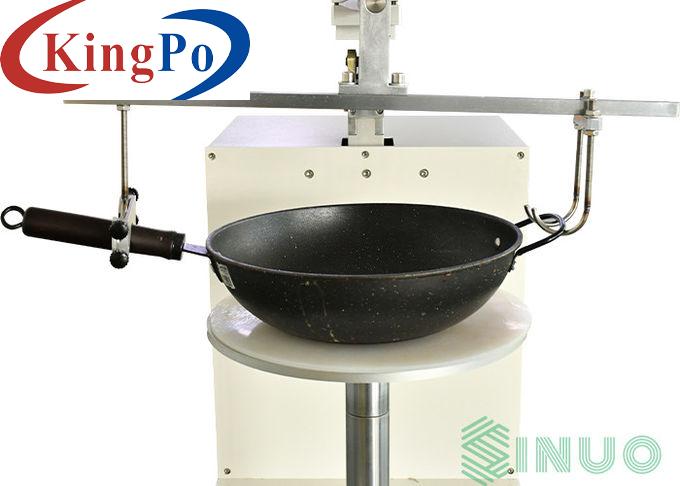
BS EN 12983-1 Cookware Handle Fatigue Tester For Handle Deformation Or Looseness Test
Products Description
BS EN 12983-1 Cookware Handle Fatigue Tester For Handle Deformation Or Looseness Test
Product information:
The design of the handle fatigue resistance test apparatus of cookware complies with BS EN 12983-1:2020 clause 7.6 and Appendix E.
It is used to perform fatigue resistance test on cookware handles. The handle assembly should withstand 15,000 cycles of operation, and the handle or connecting parts will not be permanently deformed or loosened. Without affecting safety and performance, the deformation within 5% of the total length from the end can be ignored.
Technical parameters:
1 Power supply: AC220V, 50HZ
2 Test station: 1
3 The handle lifting rod is guided by hard steel shaft and linear bearing
4 Lifting drive mode: electric motor + eccentric wheel mechanism
5 Eccentric wheel diameter: Φ80 mm, guide wheel diameter: Φ26mm
6 The distance between the guide wheel and the eccentric wheel at the lowest position: 1mm
7 Test speed: 5-30 times/min, adjustable
8 Rubber pad: 5mm thick, hardness 50±10 Shore
9 Sample fixtures: 1 set of single-handle fixing jig, 1 set of double-handle fixing hooks
10 Lifting height of the Lifting platform:300mm
11 Test weight: one of each 2kg, 1kg, 500g
12 Counter: 0-999999 times can be set, when the cumulative number of times reaches the set value, the buzzer will alarm and the equipment will stop running
10. Equipment dimensions and weight: L1000mm*W450mm*H1210mm, 135kgs
Use method:
1 First, place the apparatus in a horizontal place, place it on a flat table.
2 Perform heat resistance test on the sample in advance in accordance with the requirements of Appendix B of the standard BS EN 12983-1.
3 Use the proper fixture to clamp the handle of the cookware.
4 Adjust the "angle adjustment knob" so that the bottom of the cookware is parallel to the plane of the lifting platform, and adjust the “lifting handwheel” to make the plane of the lifting platform 1mm away from the bottom of the cookware. In case of some cookware is very short, the lifting platform is more than 1mm far away from the bottom of the cookware after it is lift to the highest position, operator should remove the plane of the lifting platform and add heightening rod (s) to heighten the lifting platform, then install the plane of the lifting platform back.
5 Place a 5mm thick rubber pad between the plane of the lifting platform and the bottom of the cookware.
6 Place the weight that simulates the weight of water in the cookware.
7 Set the counter to be 150×100 (coefficient), press the "Start” button and rotate the "Speed Adjustment " button to make the tachometer display 25, and the equipment will automatically drive the cookware to reciprocate up and down at a rate of 25 times/min, after reaching 15,000 times, the equipment will stop automatically.
8 After the test, check whether the handle of the cookware is permanently damaged and whether the fastener is loose.
9 Make the conclusion after the test.
Test station
Single
Drive mode
Electric + eccentric wheel mechanism
Test speed
5-30 times/min, adjustable
Rubber plate
5mm thick, hardness 50±10 Shore
Sample fixture
set of single-handle fixing jig, 1 set of double-handle fixing hook
Lifting height of the level surface
300mm
Test mass
One of each 2kg, 1kg, 500g
Counter
0-999999 times can be set
Power supply
Match client's local power grid


